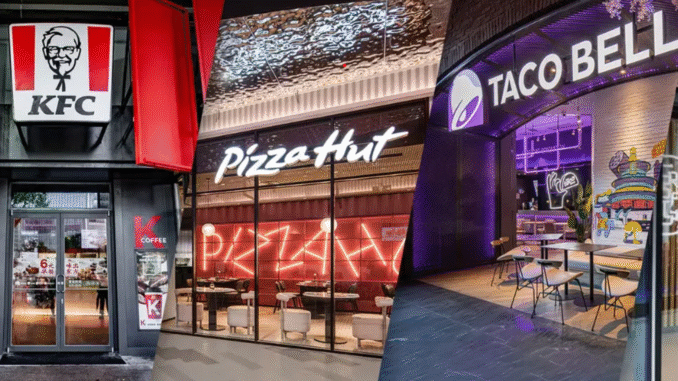
By RTN editors - 6.21.2025
The week of June 15 marked a turning point in restaurant technology, as multiple global and U.S.-based brands moved from experimental pilots to full-scale rollouts of AI systems, voice ordering, and robotics. These moves signal a strong industry shift toward practical automation, data-driven personalization, and operational simplification—without losing sight of the guest experience.
Dine Brands Rolls Out AI Across 3,500+ Locations
Dine Brands, parent company of Applebee’s, IHOP, and Fuzzy’s Taco Shop, announced a major rollout of artificial intelligence across its entire system. Amazon Q now powers a generative tech support tool used by franchisees, enabling real-time issue resolution without manual lookups. AI-powered cameras have been deployed to detect uncleared tables, streamlining FOH turnover. At the same time, a new personalization engine is serving dynamic, behavior-based offers directly to guests. CIO Justin Skelton described the initiative as an integrated move toward improving efficiency, guest loyalty, and system-wide performance at scale.
Domino’s Voice AI Surpasses 80% of Phone Orders
Domino’s confirmed that its upgraded voice-AI assistant, now enhanced by Rime Labs’ adaptive text-to-speech technology, is processing approximately 80 percent of all North American phone orders. Recent updates introduced regional dialects and improved menu-specific pronunciation, dramatically reducing the number of calls needing human intervention. The voice-AI system is now fully embedded into operations, improving speed and consistency while allowing human staff to focus on more complex guest needs.
Yum China Pilots Q-Smart AI Assistant in KFC Stores
Yum China has introduced Q-Smart, a generative AI assistant now being tested in select KFC locations. Designed to support restaurant managers, Q-Smart assists with inventory tracking, staff scheduling, and quality checks—streamlining routine tasks and reducing administrative burden. Part of the company’s broader Byte by Yum! digital initiative, Q-Smart is intended to enhance operational efficiency without replacing human oversight. Early pilots aim to evaluate the system’s usability and impact on day-to-day restaurant management before wider deployment.
Appetronix Expands Autonomous Kitchens
Appetronix unveiled its expanded robotic kitchen lineup following its successful pizza automation pilot in Ohio. The company introduced autonomous Asian and Mexican cuisine modules, which it plans to deploy in airports, stadiums, and hospitals. Each unit is capable of operating 24/7, with real-time AI quality control and MIS reporting features, representing a scalable path forward for consistent, unmanned food production.
Miso Robotics Partners to Scale Kitchen Automation
Miso Robotics, maker of the Flippy and Chippy robotic stations, announced a new partnership with Roboworx to support installation, maintenance, and field expansion. The collaboration is aimed at solving one of the key friction points for widespread automation: reliable deployment and servicing across distributed restaurant locations.
Richtech Robotics Opens First Fully Robotic Drink Station
Richtech Robotics opened its first One Kitchen location inside a Walmart in Georgia. The venue features a humanoid robot named Scorpion, powered by Nvidia’s AI stack, that prepares coffee, milk teas, and fruit drinks autonomously. The front-of-house deployment reflects growing interest in robot-led service that’s visible to guests and designed to enhance speed and novelty in beverage operations.
AI Voice Tech Delivers Measurable Sales Impact
Rime Labs, the company behind the adaptive voice used in Domino’s and Wingstop’s AI systems, reported sales lift among restaurants using its voice ordering platform. The increase is attributed to shorter call times, higher upsell success, and improved guest comfort with the conversational tone and fluid speech patterns of the assistant.
This week’s developments underscore a critical shift: restaurant technology is no longer experimental. It’s operational, scalable, and increasingly central to how brands think about labor management, guest experience, and profitability. AI is now embedded in FOH and BOH systems. Robotics are moving from test kitchens to real deployments. Voice ordering has evolved from a novelty to a core part of the guest journey.

